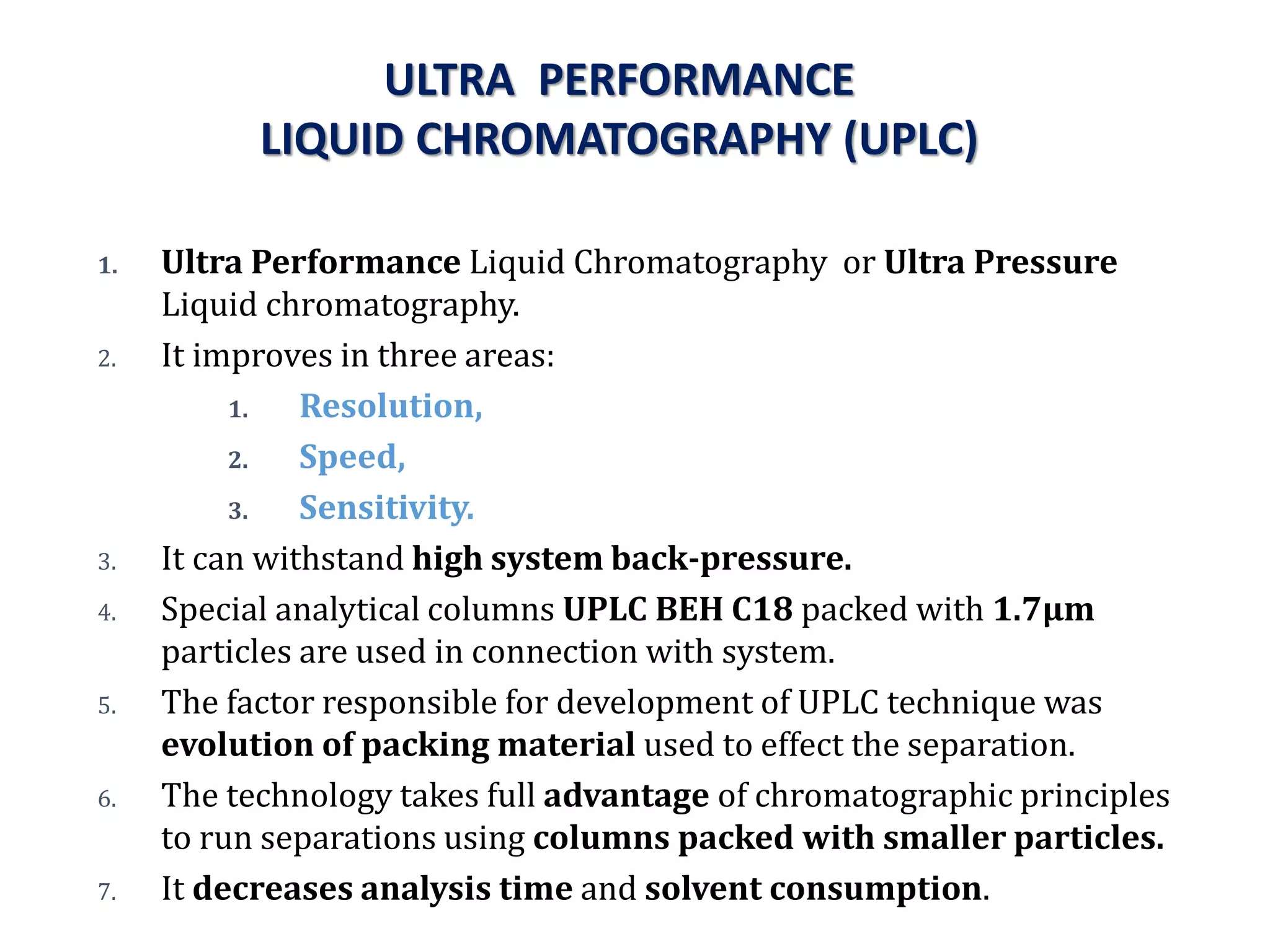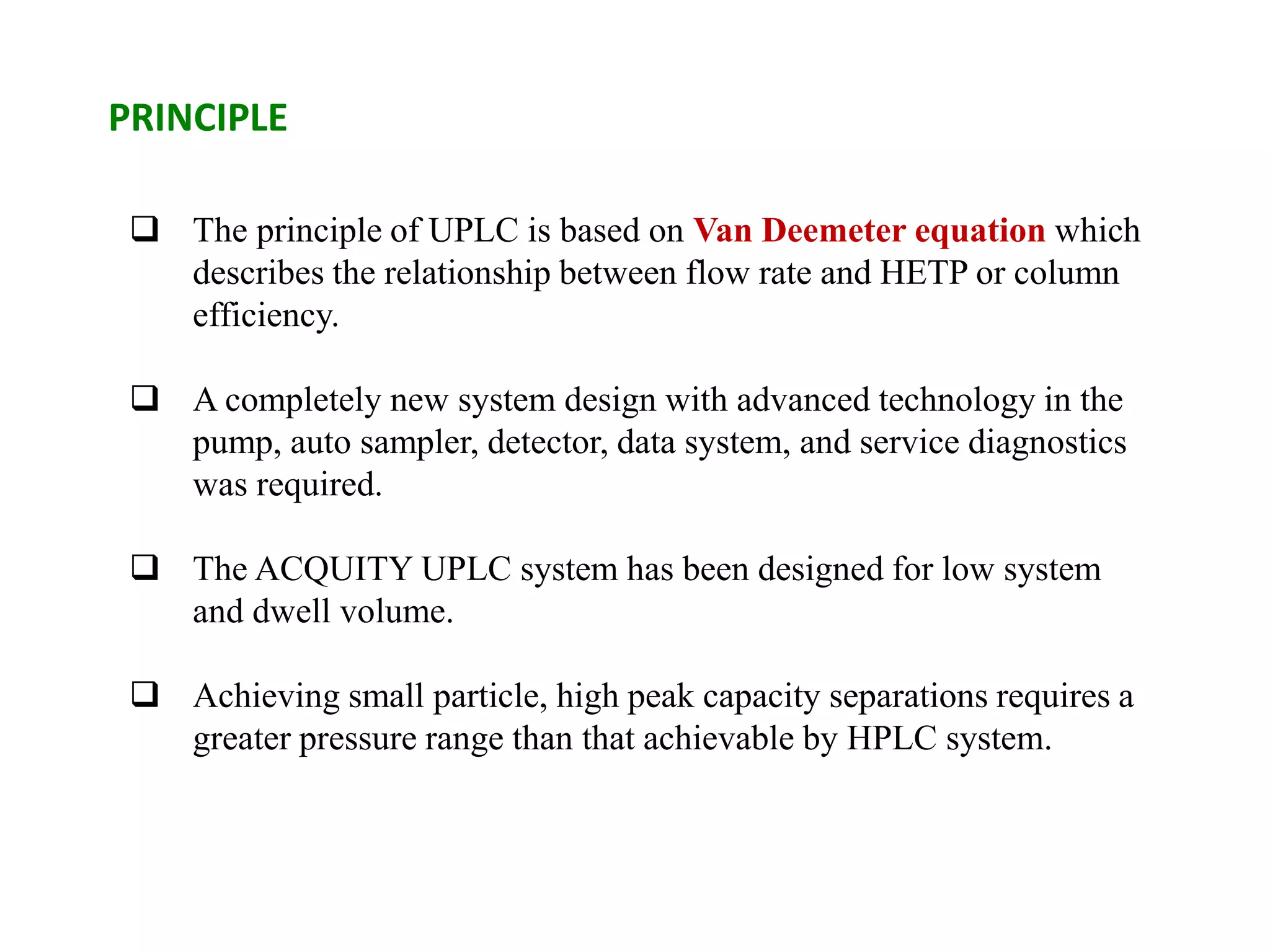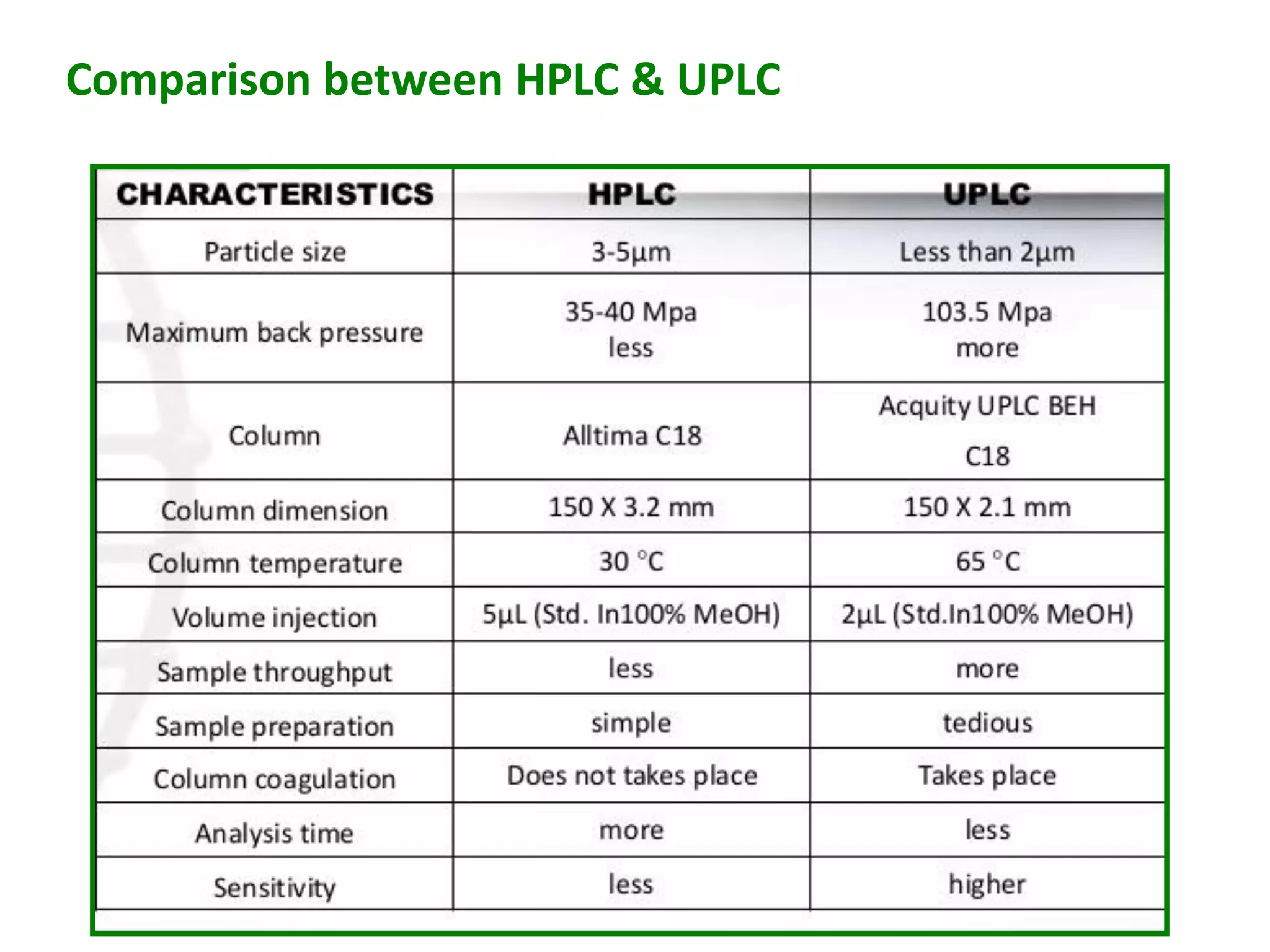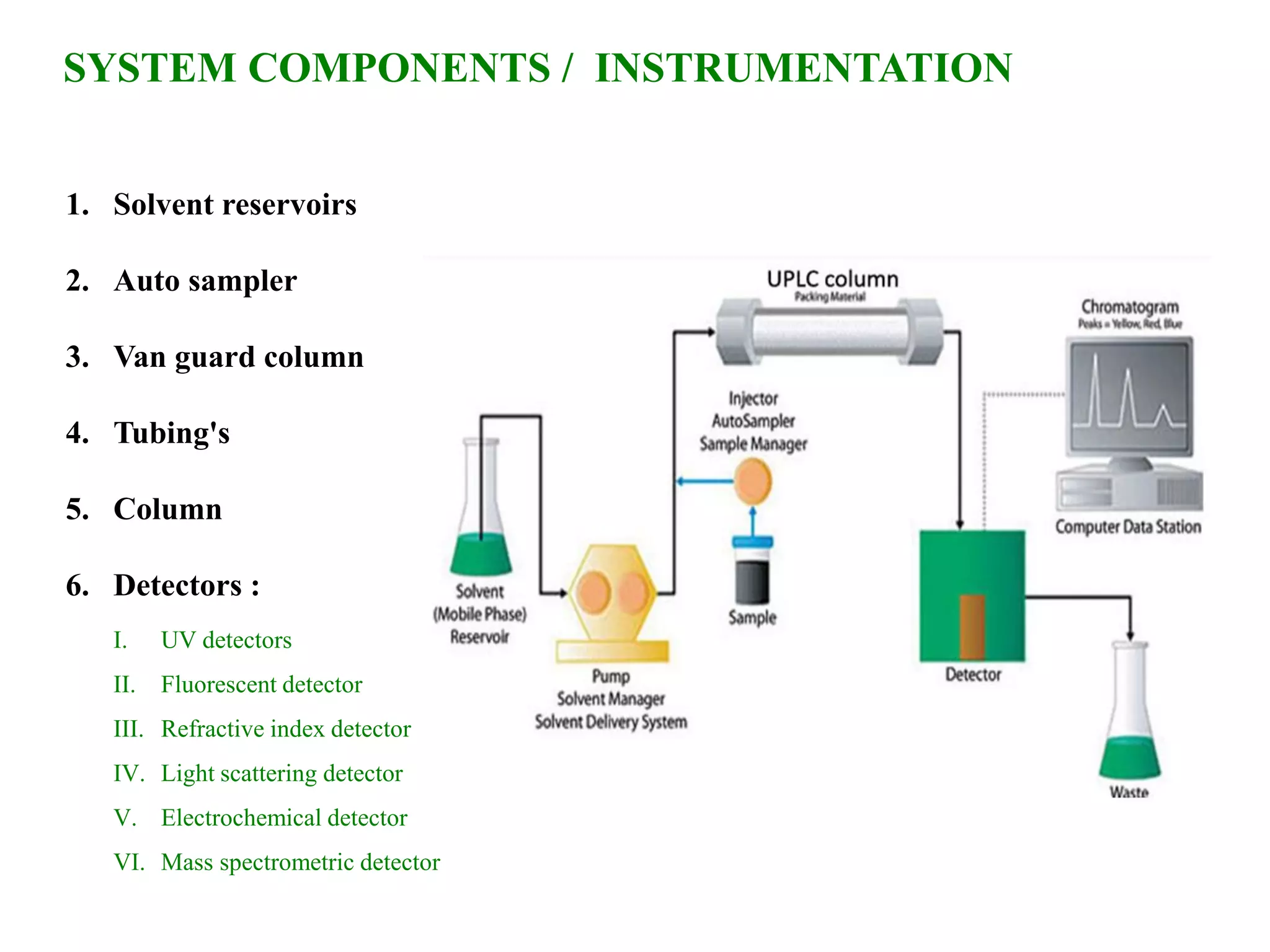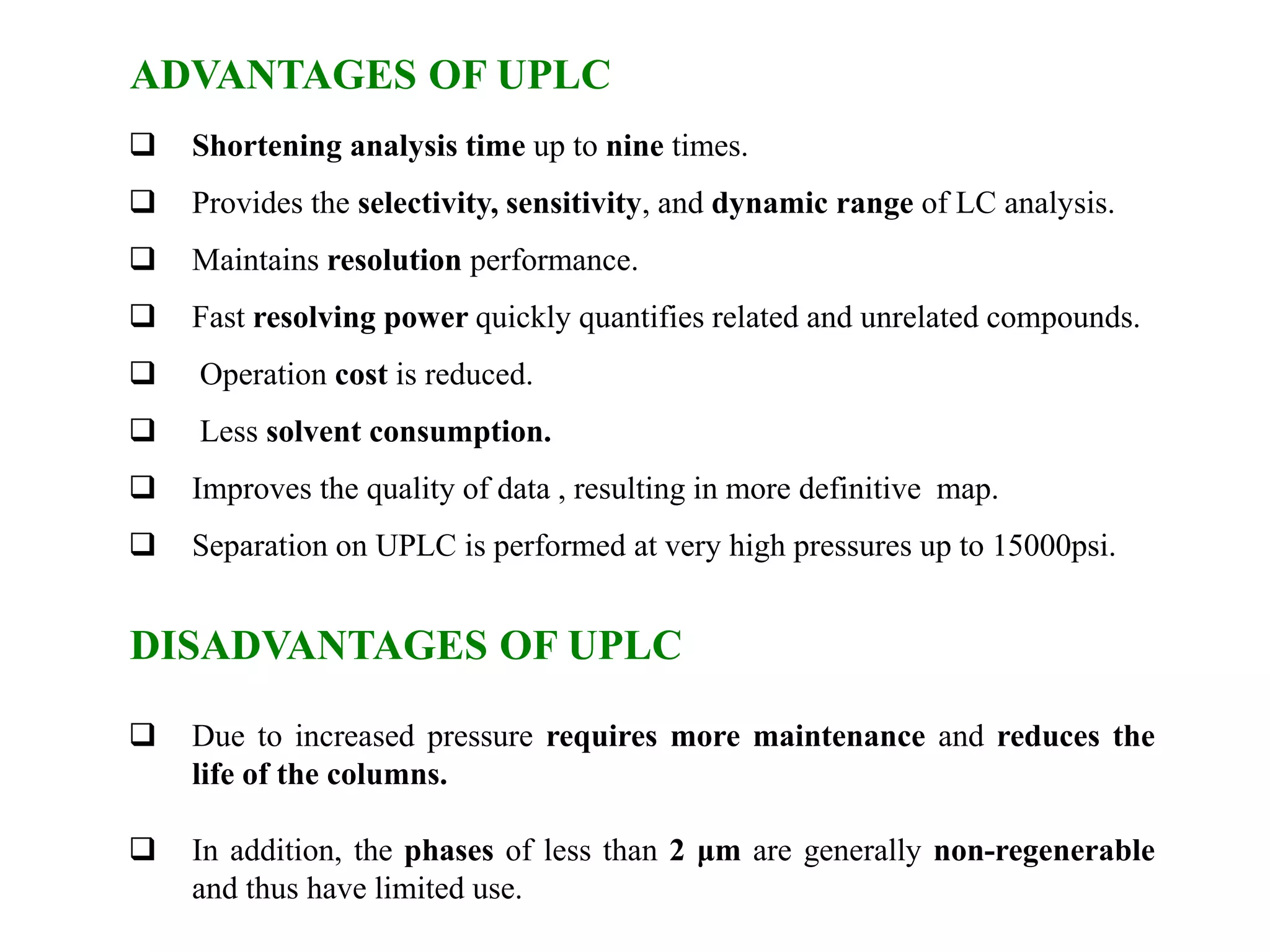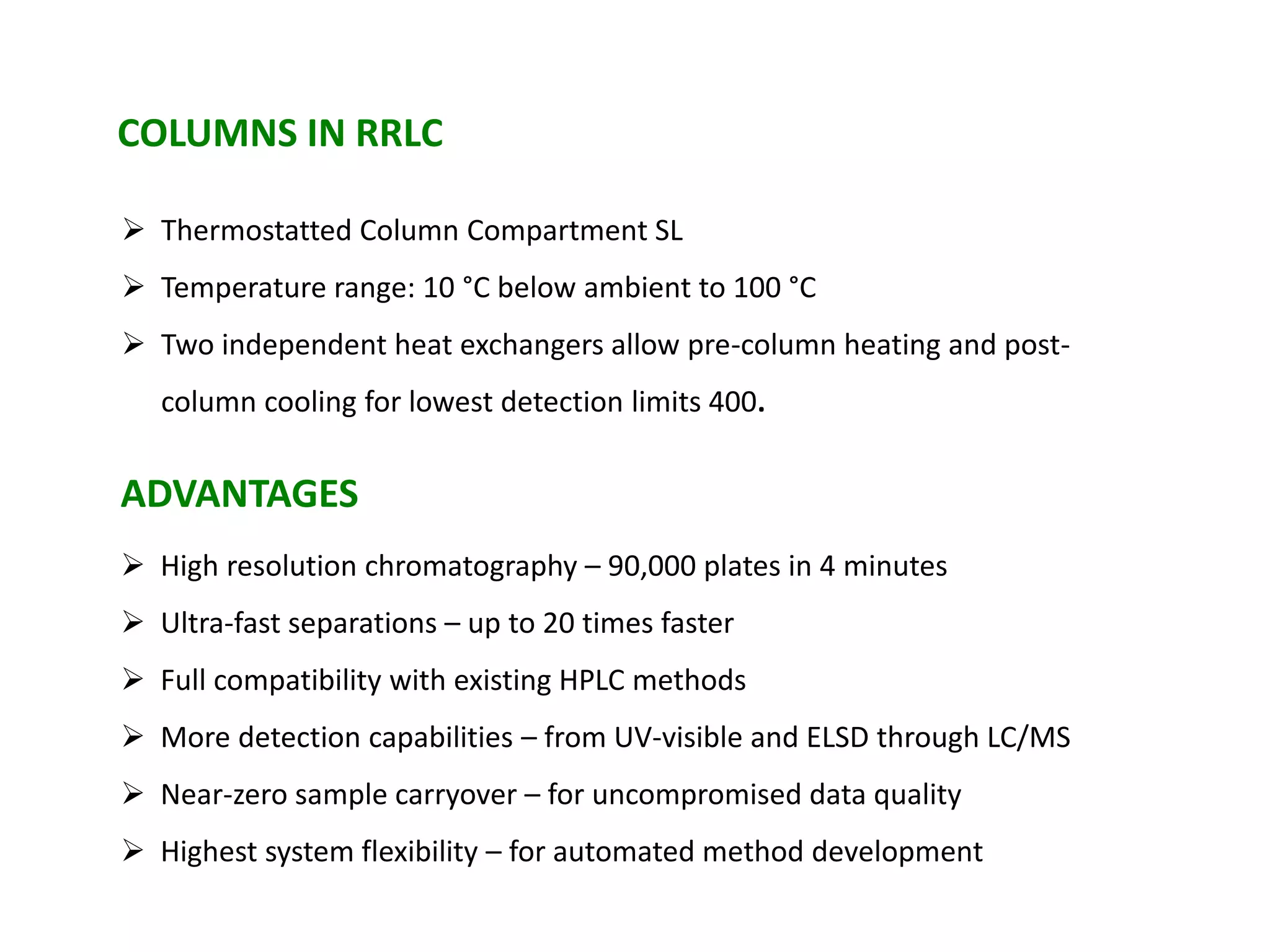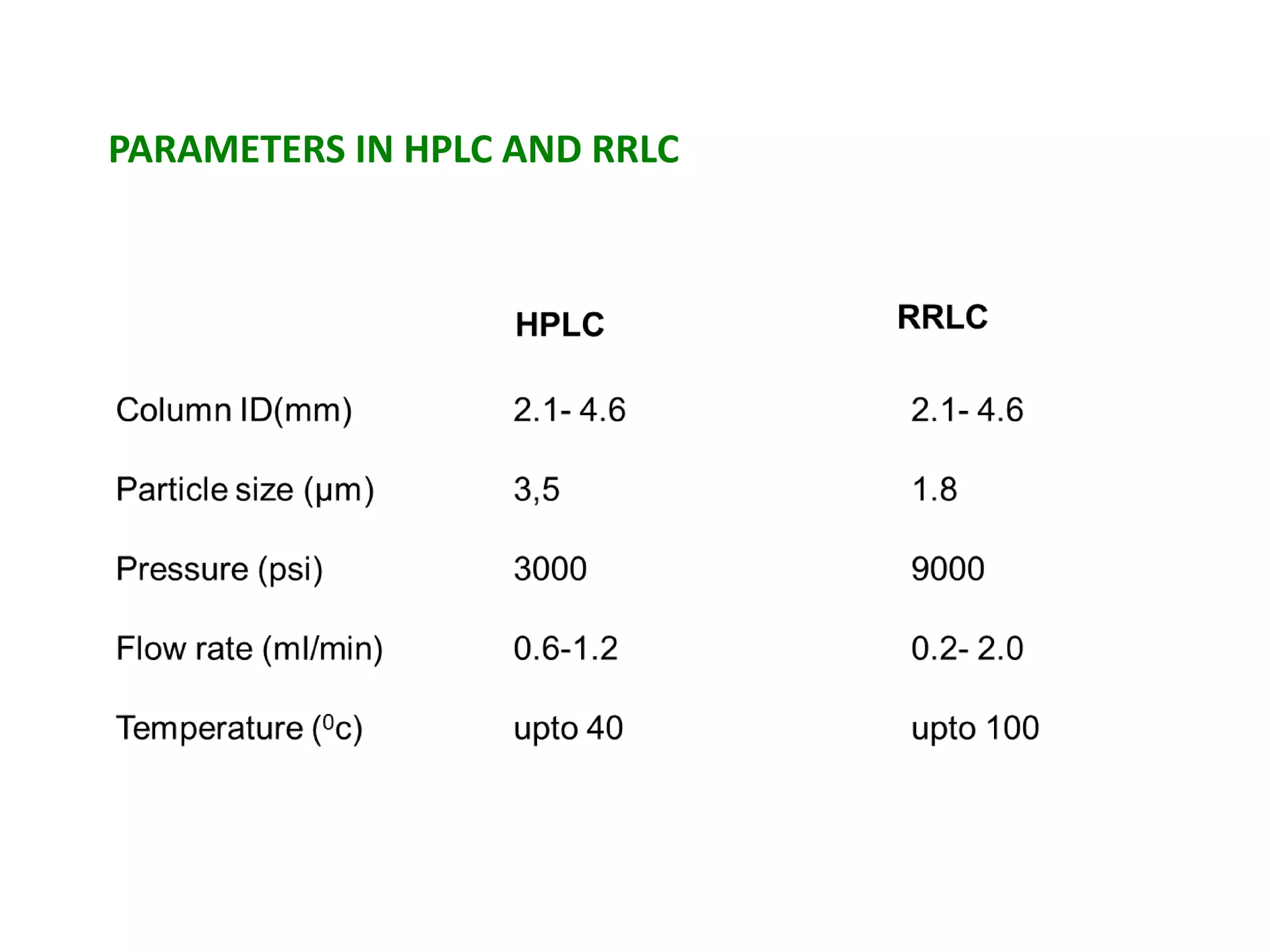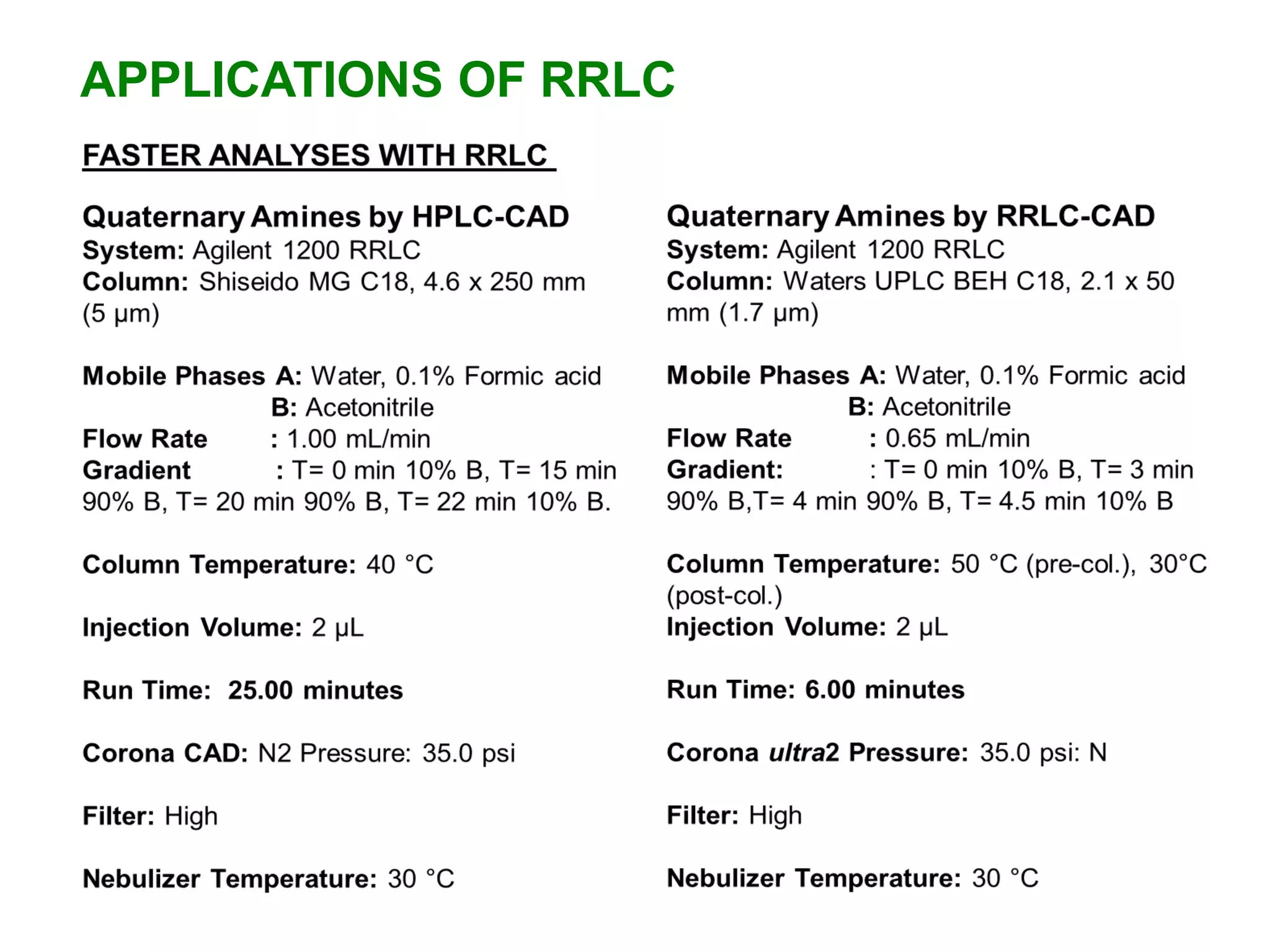This document discusses various chromatography techniques including high-performance liquid chromatography (HPLC), fast protein liquid chromatography (FPLC), ultra-performance liquid chromatography (UPLC), and rapid resolution liquid chromatography (RRLC). HPLC uses pumps to pass a pressurized liquid through a column to separate sample components. FPLC is a modified HPLC used for protein separations using aqueous buffers and resins. UPLC uses smaller particle columns (<2μm) than HPLC to improve resolution, speed, and sensitivity. RRLC also uses sub-2μm particles and high flow rates to achieve faster analysis times than HPLC while maintaining resolution.
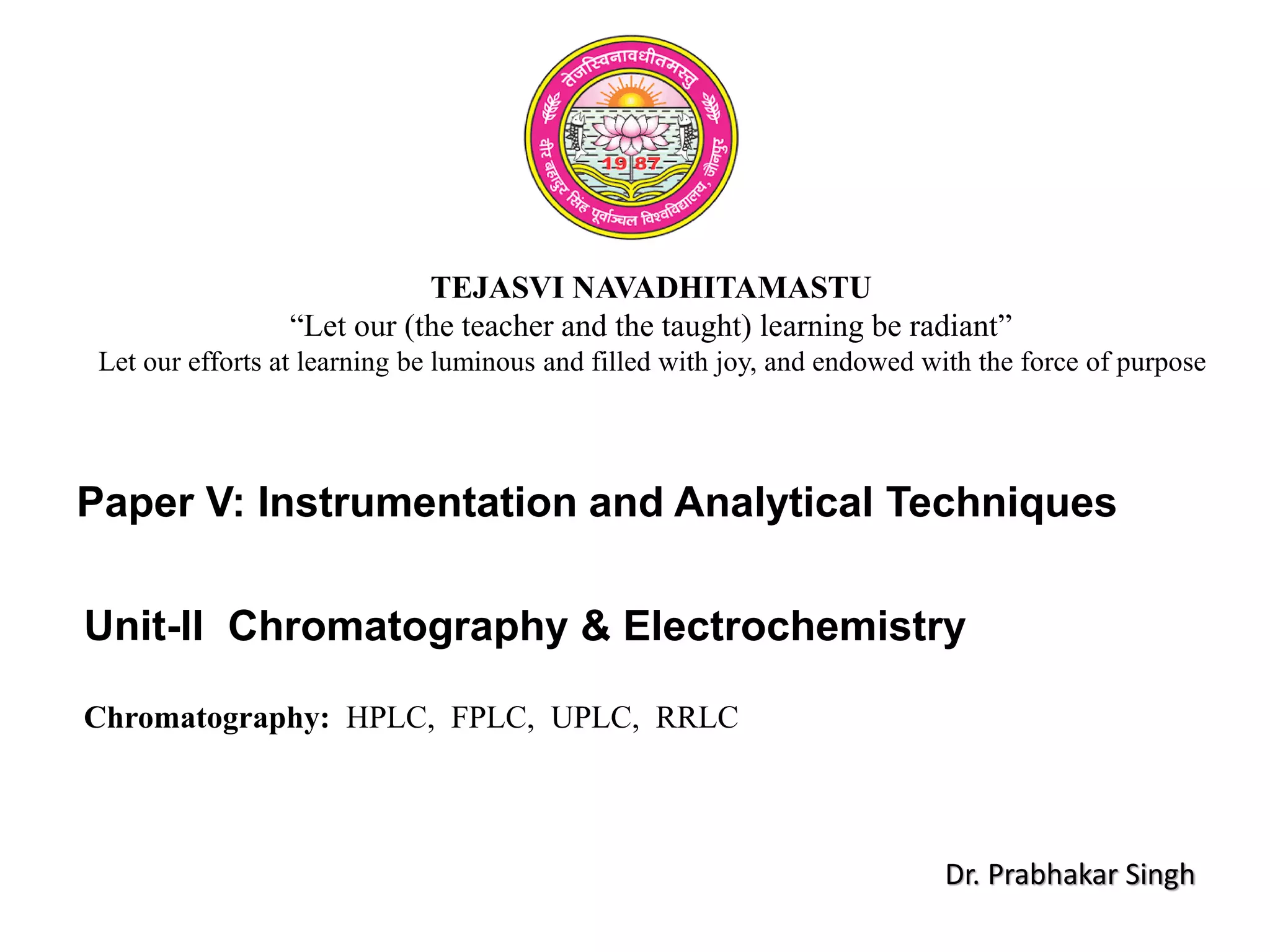
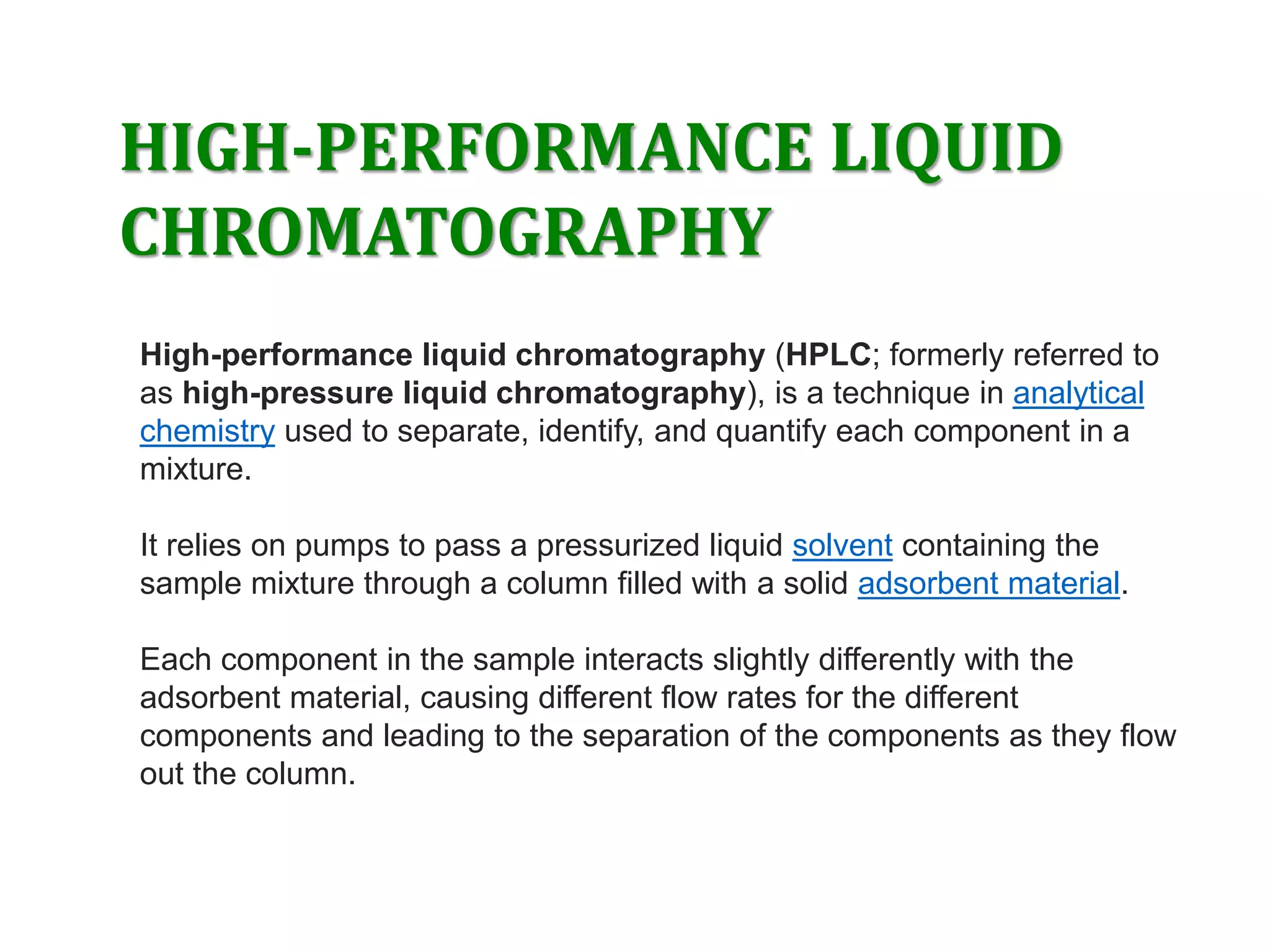
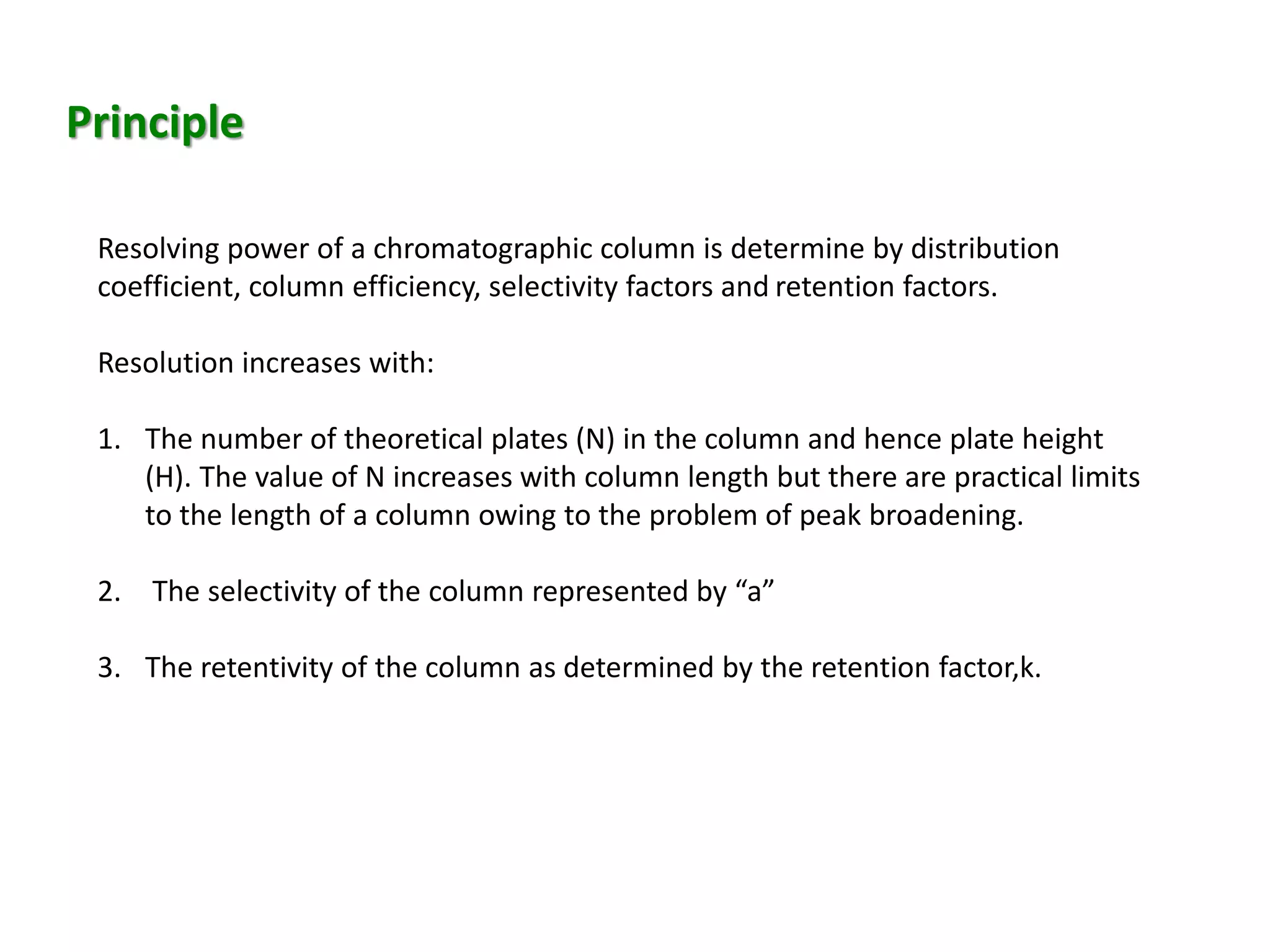
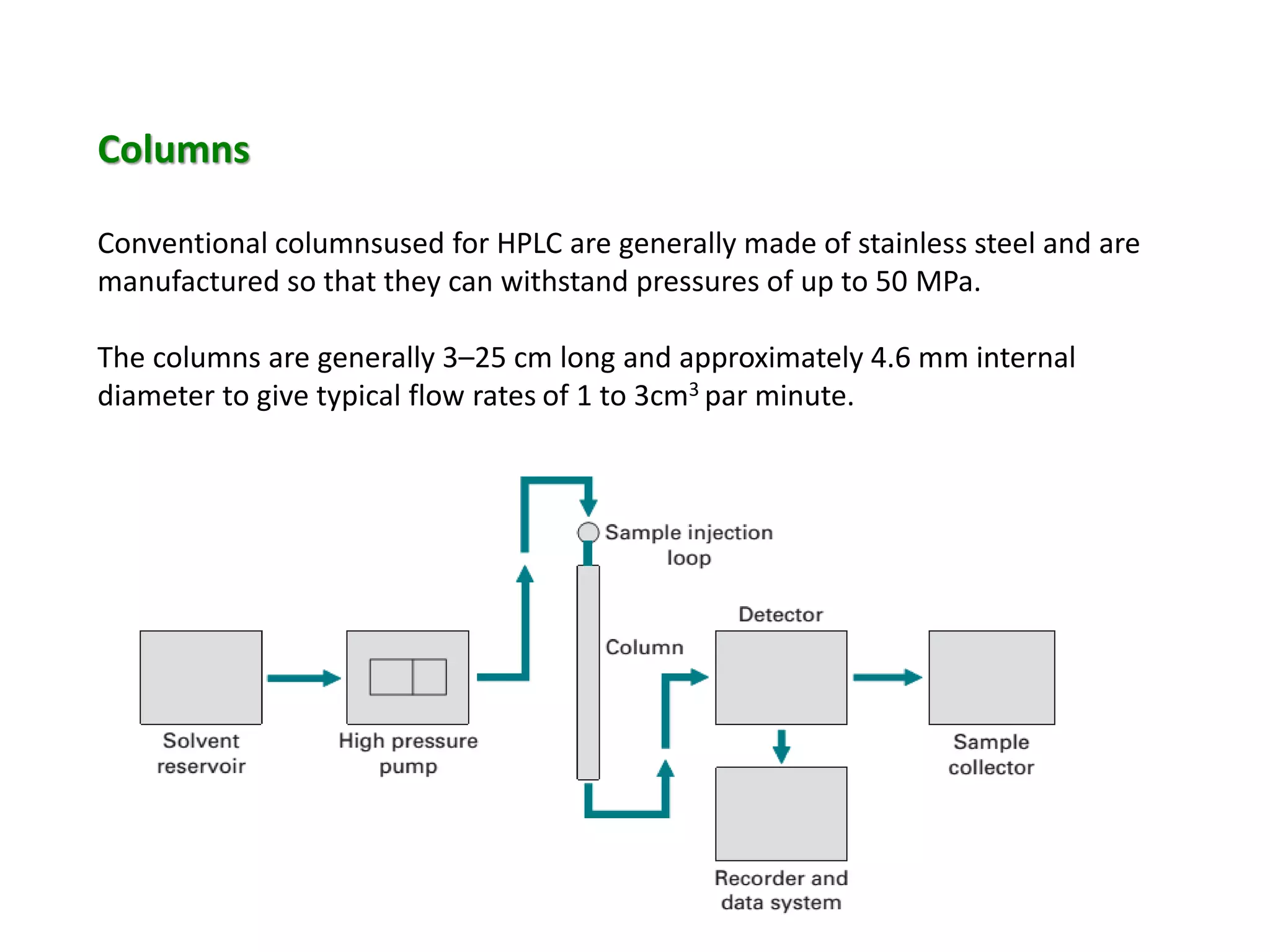

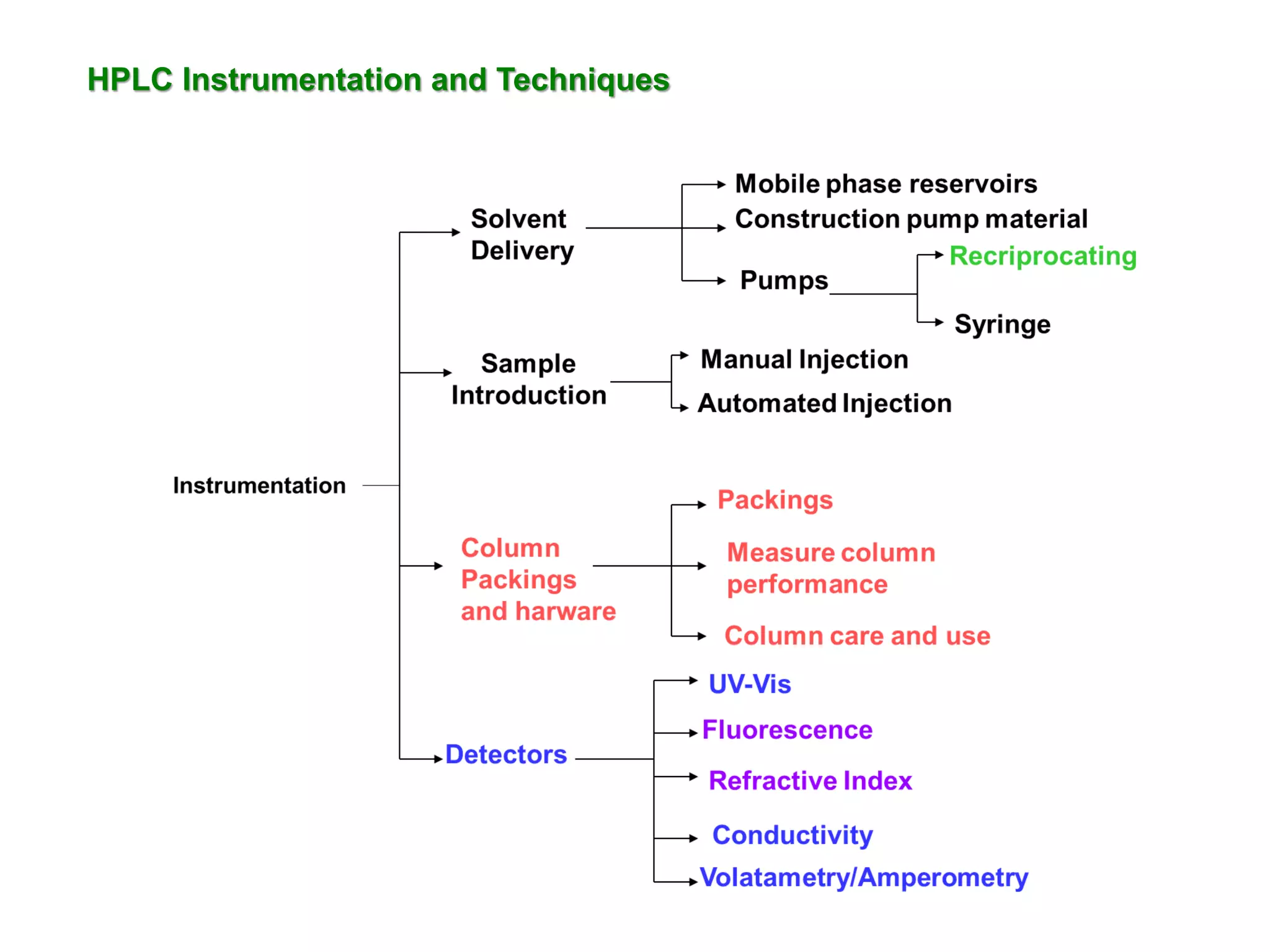
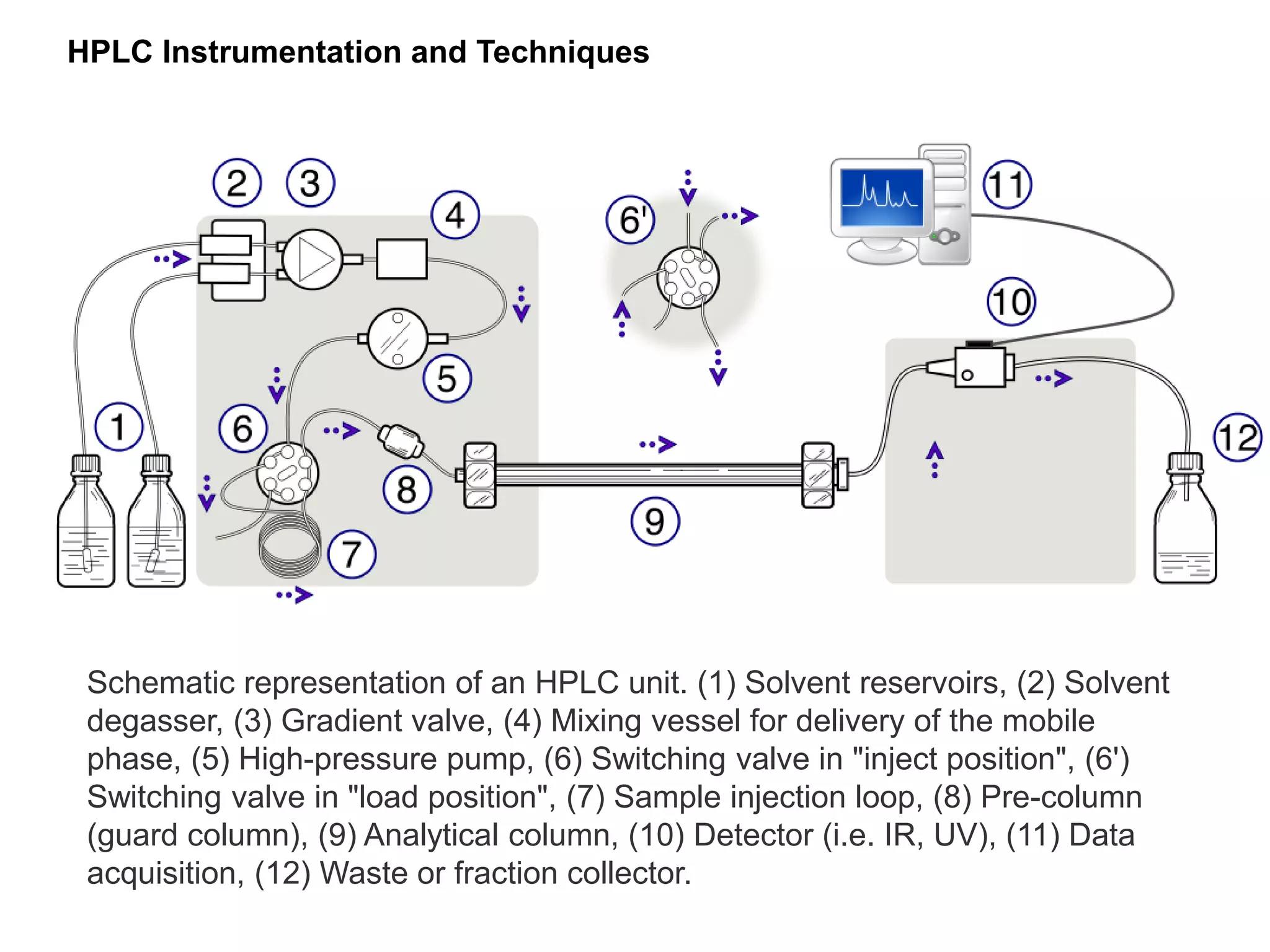
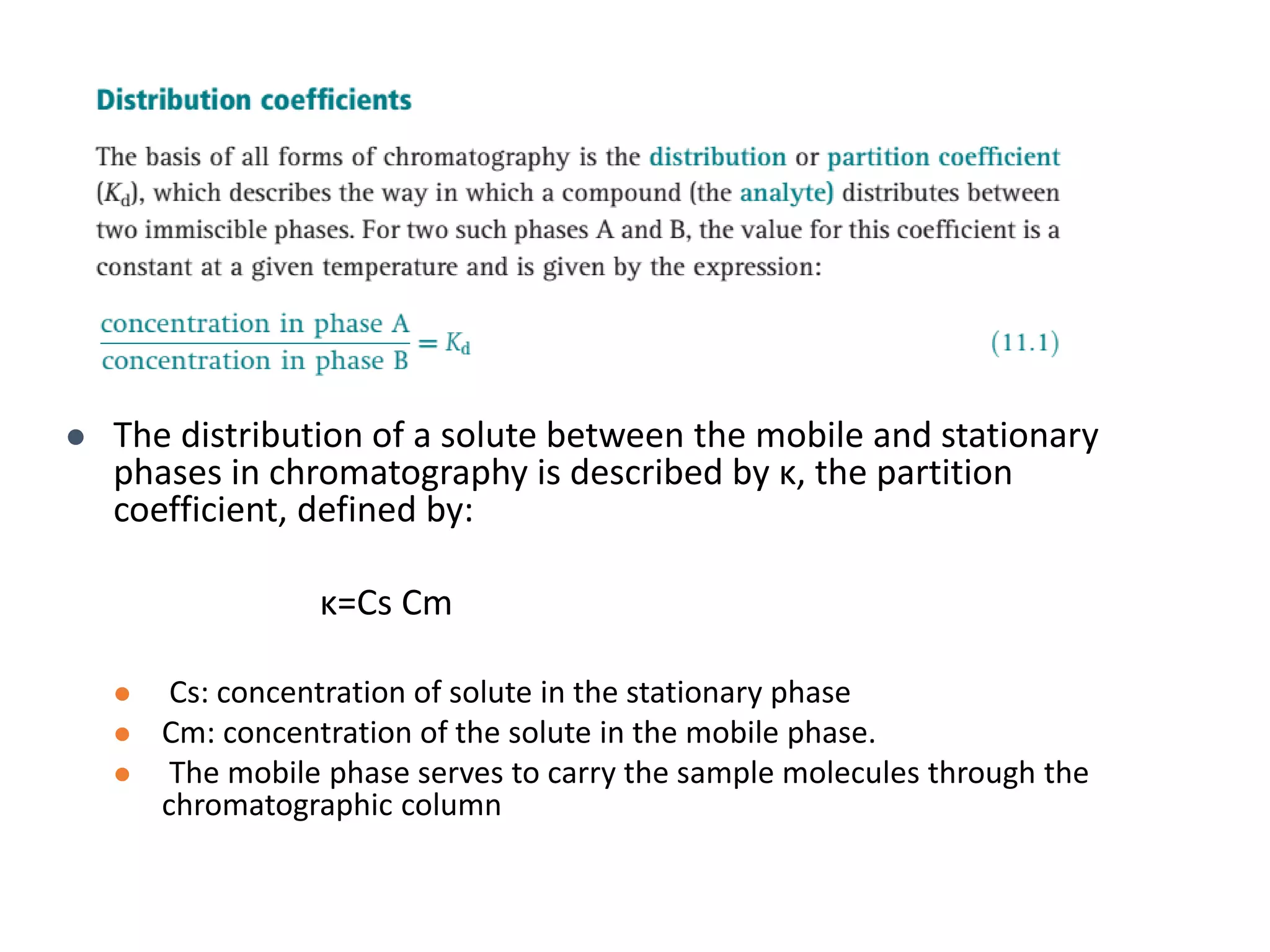
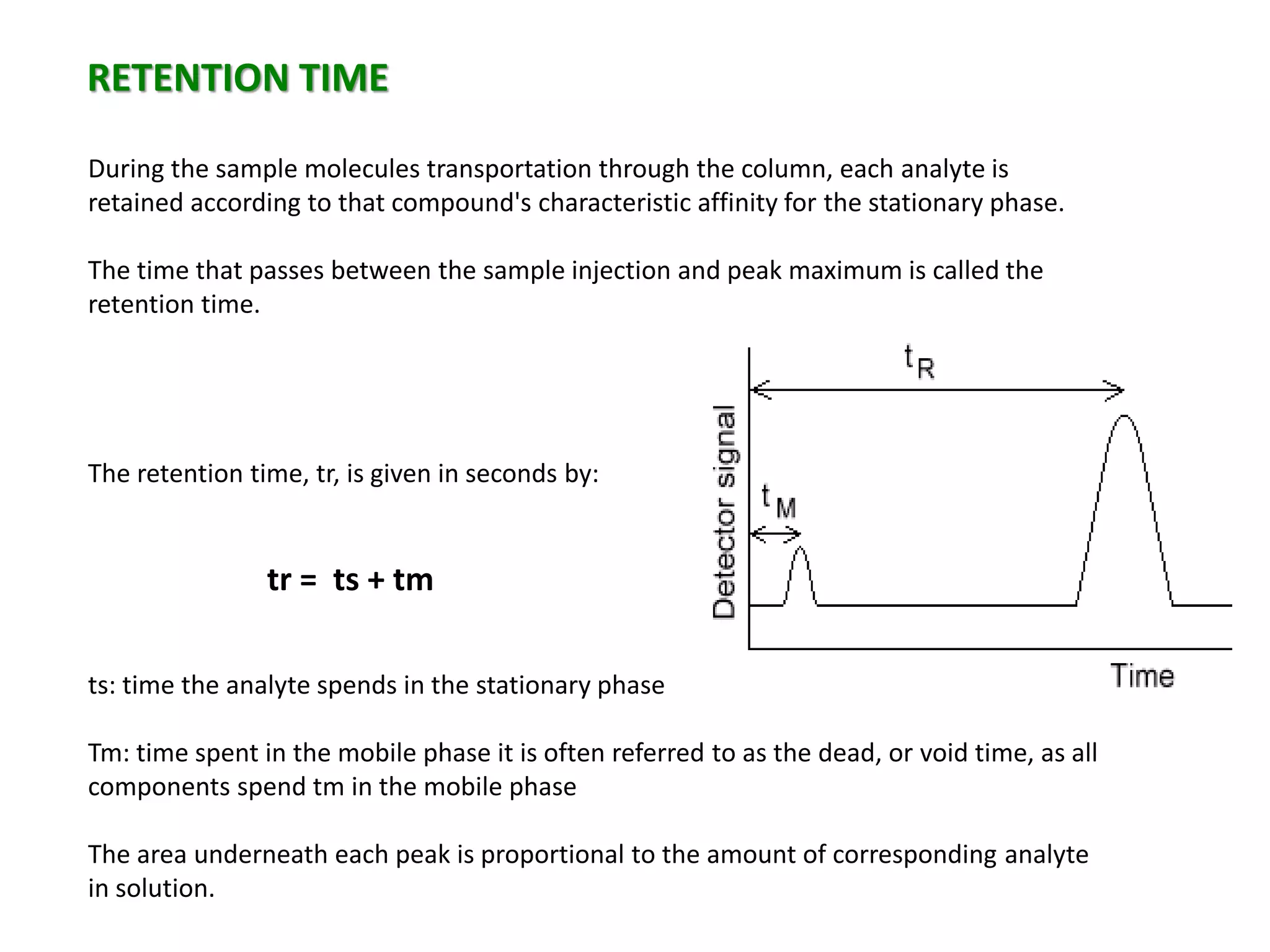
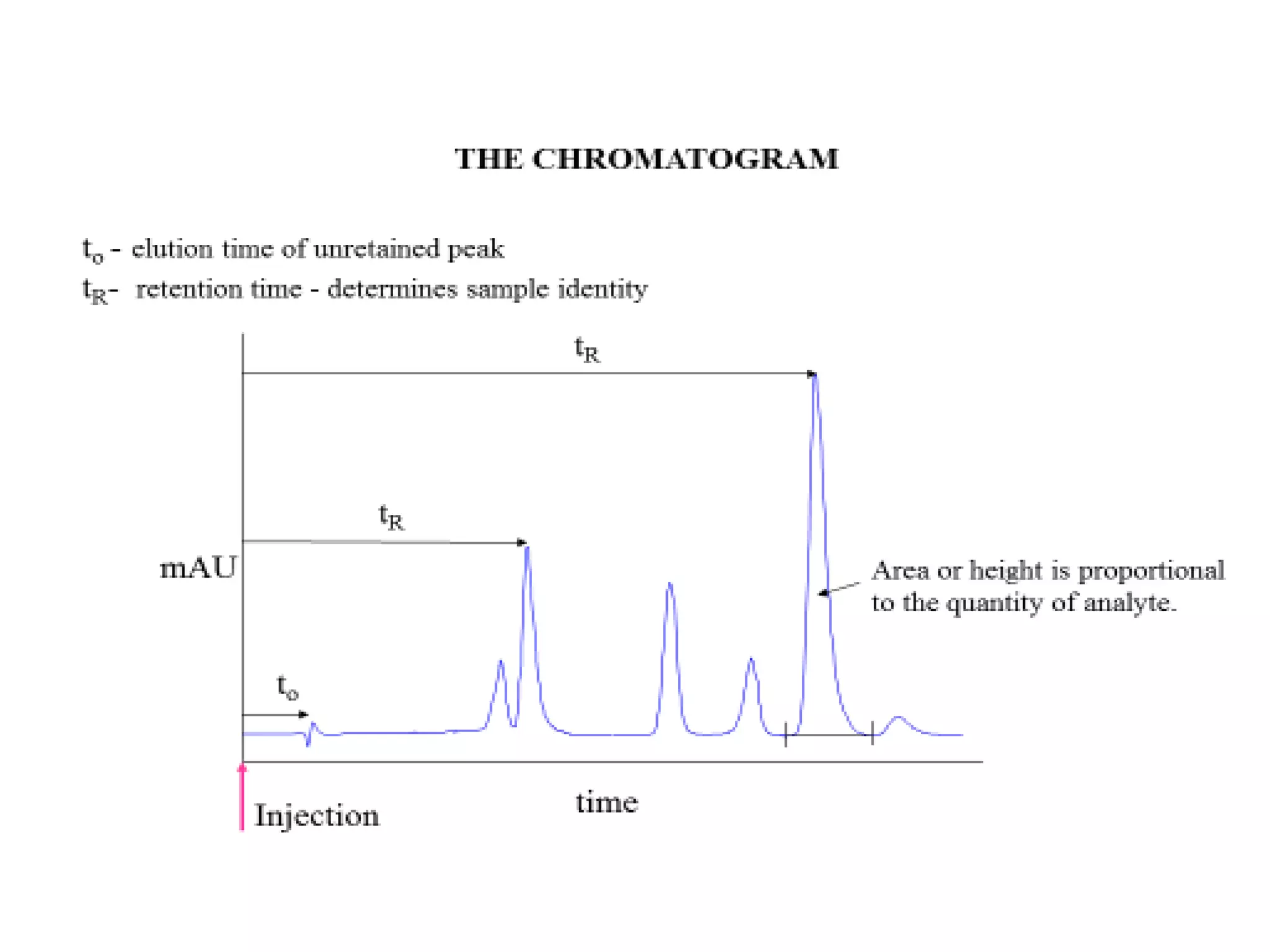
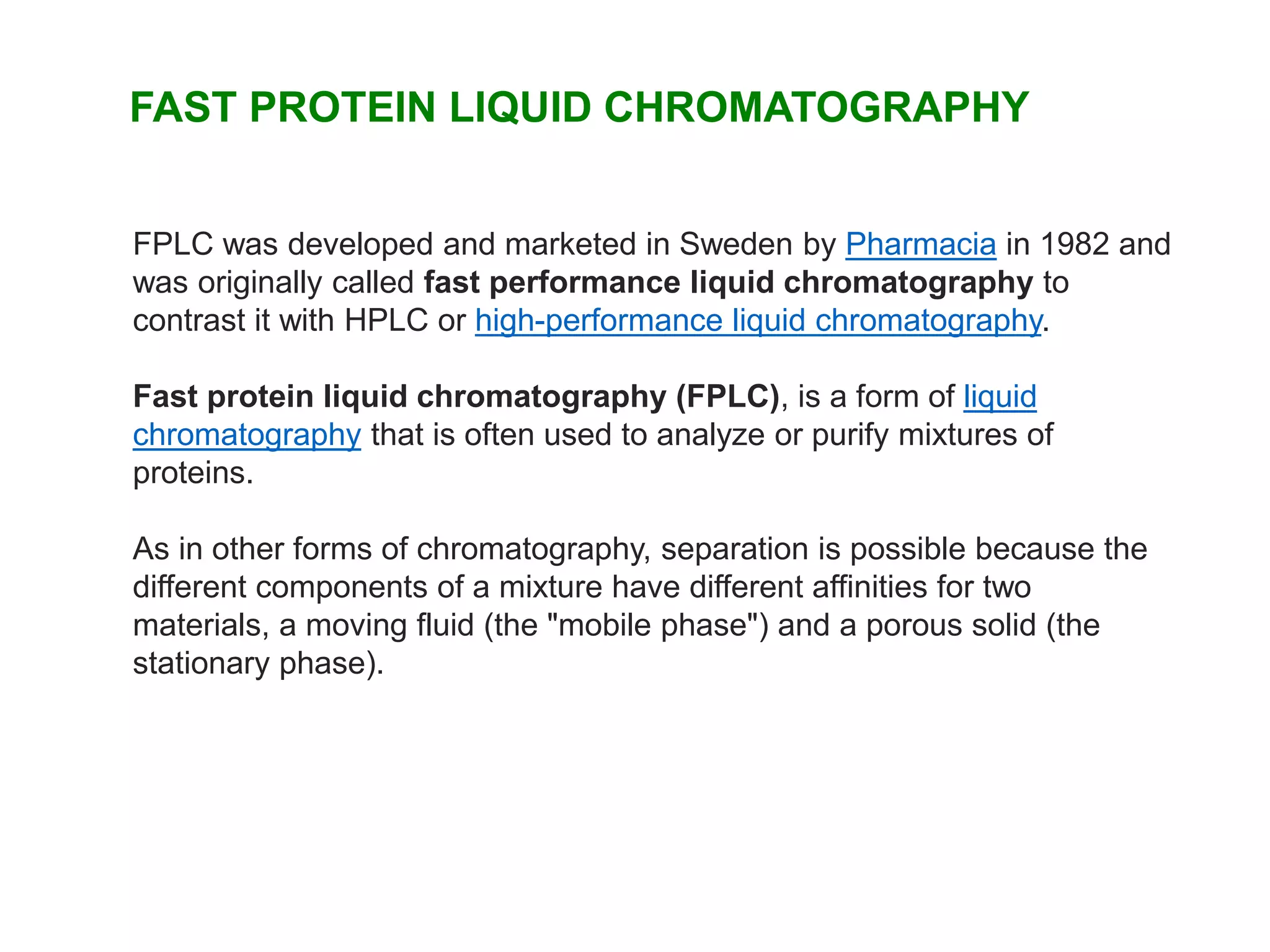

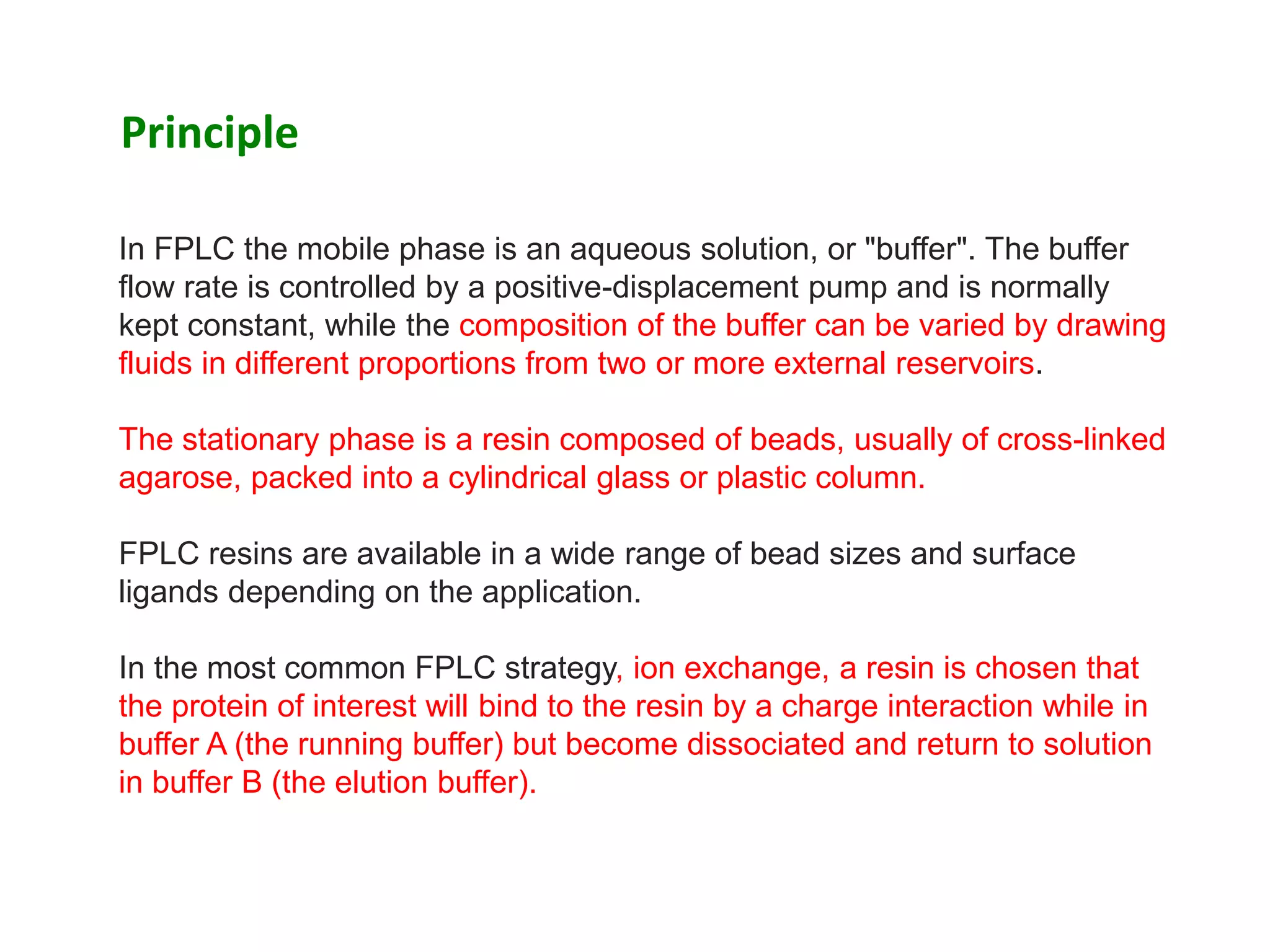
![FPLC is generally applied only to proteins; however, because of the
wide choice of resins and buffers it has broad applications.
In contrast to HPLC the buffer pressure used is relatively low,
typically less than 5 bar, but the flow rate is relatively high, typically
1-5 ml/min.
FPLC can be readily scaled from analysis of milligrams of mixtures
in columns with a total volume of 5ml or less to industrial
production of kilograms of purified protein in columns with volumes
of many liters.
When used for analysis of mixtures the effluent is usually collected
in fractions of 1-5 ml which can be further analyzed, e.g.
by MALDI mass spectrometry.
When used for protein purification there may be only two collection
containers, one for the purified product and one for waste.[2]](https://image.slidesharecdn.com/prabhakarsingh-iisem-papervhplcfplcuplcrrlc-200514080516/75/Prabhakar-singh-ii-sem-paper-v-hplc-fplc-uplc-rrlc-14-2048.jpg)
![ A mixture containing one or more proteins of interest is dissolved in 100%
buffer A and pumped into the column.
The proteins of interest bind to the resin while other components are carried
out in the buffer.
The total flow rate of the buffer is kept constant; however, the proportion of
Buffer B (the "elution" buffer) is gradually increased from 0% to 100%
according to a programmed change in concentration (the "gradient").
At some point during this process each of the bound proteins dissociates
and appears in the effluent.
The effluent passes through two detectors which measure salt concentration
(by conductivity) and protein concentration (by absorption of ultraviolet light
at a wavelength of 280nm).
As each protein is eluted it appears in the effluent as a "peak" in protein
concentration and can be collected for further use.[1]
Procedure:](https://image.slidesharecdn.com/prabhakarsingh-iisem-papervhplcfplcuplcrrlc-200514080516/75/Prabhakar-singh-ii-sem-paper-v-hplc-fplc-uplc-rrlc-15-2048.jpg)

